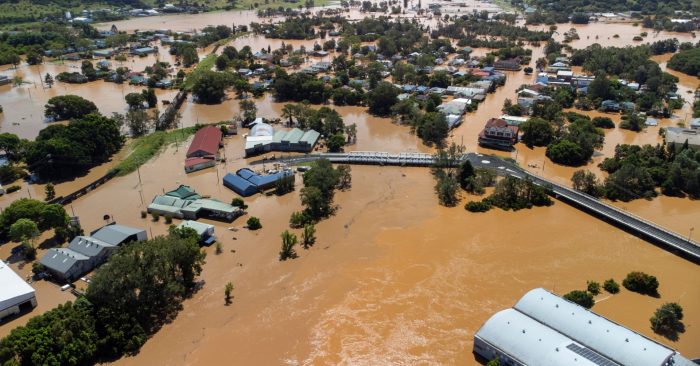Absorbing the rainfall
The research team, which also included Professor Lucy Marshall who was at UNSW but has since taken up a role at University of Sydney, also took into consideration the fact that flooding events could be impacted by the effect of the forest fires on the surface soil.
Fires can make the soil hydrophobic – which means it repels water rather than absorbs it – thus potentially causing an increase in the chance of a flood event after rainfall.
But analysis showed this was not a significant factor in the flood risk increasing when compared to the impact of the loss of the forest canopy and leaf litter which absorbs and disperses rainfall.
And to double-check their conclusions, the research team also compared streamflow data in relevant years from areas where damage from forest fires was extensive, versus that in areas where the burning was not so severe.
“We contrasted those two sets and we could see there was a dampening effect in the forested catchments which was not happening in the more heavily deforested areas,” says Professor Young-Oh Kim from Korea’s Seoul National University and a co-author of the study.
“And that is comparing the levels of flooding in proximal areas in the same year, so obviously the climate was the same for both and the only thing significantly different is the loss of forest canopy.
“Recent mega wildfires in South Korea highlight the increasing exposure to severe forest loss driven by climate change, a phenomenon that has become increasingly common worldwide. According to our study, after each disastrous wildfire, societies need to seriously consider the flood risk increase that will occur.”
The paper helps explain the specific process by which a large forest canopy helps lower the risk of flooding.
With more forestation there is a two-fold impact that reduces the impact of rainfall and reduces the risk of flooding.
The first is the canopy of the trees – that is the branches and the leaves – which first block the rain from reaching the ground. If there is heavy rain it can also disperse the water over a wider area and over a longer time which reduces the peak amount of moisture reaching the ground, and therefore lowers the potential flood levels.
Secondly with more trees in a catchment area, there are also more fallen leaves and that dampens the flow of any rain that does reach the ground.
When there is significant deforestation the canopy and leaf litter is severely diminished, and the water they were previously absorbing goes straight into the soil, which can then more quickly get saturated. And when that happens the risk of a flood subsequently goes up.
Implications for the future
Prof. Sharma hopes the research will be taken on board by anyone involved in the process of man-made deforestation, given the devastating impact flooding can have on human populations who may be living in areas at risk.
“The data is collected from south-east Australia, but we see no reason why the conclusion does not apply in the same way anywhere else where forest canopy is being removed,” he says.
“Our main message is that extensive deforestation has a significant increase in flood risk. If deforestation is happening, then there should be strong consideration for planning rules or regulations regarding habitats downstream, to reduce the enhanced danger they will face from flooding.
“We would also advise that if deforestation has to occur, it should be restricted to areas that do not have vulnerable communities downstream.”

